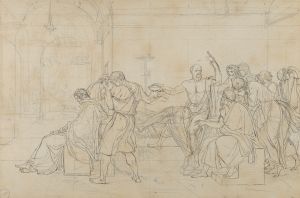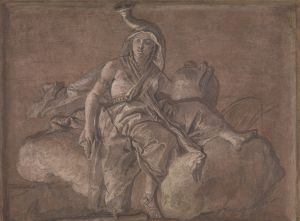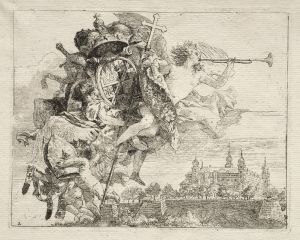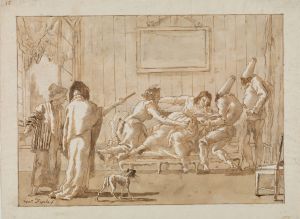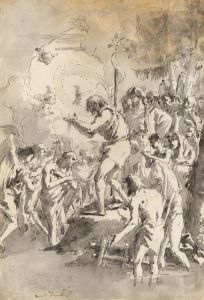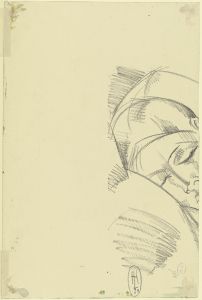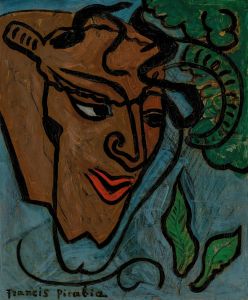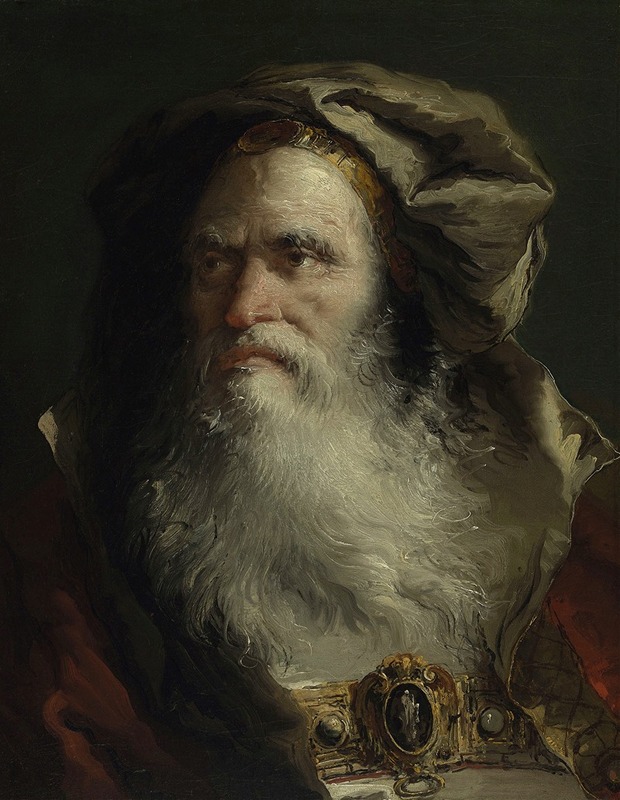
Head of a Philosopher
A hand-painted replica of Giovanni Domenico Tiepolo’s masterpiece Head of a Philosopher, meticulously crafted by professional artists to capture the true essence of the original. Each piece is created with museum-quality canvas and rare mineral pigments, carefully painted by experienced artists with delicate brushstrokes and rich, layered colors to perfectly recreate the texture of the original artwork. Unlike machine-printed reproductions, this hand-painted version brings the painting to life, infused with the artist’s emotions and skill in every stroke. Whether for personal collection or home decoration, it instantly elevates the artistic atmosphere of any space.
Giovanni Domenico Tiepolo's Head of a Philosopher is a drawing attributed to the Venetian artist, who was active during the 18th century. Giovanni Domenico Tiepolo (1727–1804) was the son of the renowned painter Giovanni Battista Tiepolo and is recognized for his contributions to the Rococo style, as well as his ability to blend humor, narrative, and classical themes in his works. While Domenico is best known for his frescoes and religious paintings, his drawings also demonstrate his technical skill and interest in capturing human expression.
Head of a Philosopher is a study of a male figure, focusing on the subject's head and facial features. The drawing showcases Domenico's mastery of line and shading, which he used to convey depth and texture. The philosopher's face is marked by a contemplative expression, with detailed attention given to the furrowed brow, deep-set eyes, and aged features. These elements suggest the artist's intent to portray the intellectual and emotional depth often associated with philosophers.
The work is executed in black chalk, a medium commonly used by artists of the period for preparatory studies and standalone drawings. The simplicity of the medium allows the viewer to focus on the subject's expression and the artist's technique. The drawing is believed to reflect Domenico's interest in classical antiquity and the intellectual traditions of his time, themes that were prevalent in the Enlightenment era.
The exact purpose of Head of a Philosopher is not documented, but it may have been a preparatory study for a larger painting or a standalone work intended to explore the human condition. Domenico often created drawings that were not directly tied to his larger projects, instead using them as exercises in observation and expression.
The provenance of the drawing and its current location are not widely documented in public records. However, like many of Domenico's works, it reflects the artistic environment of 18th-century Venice, where the Tiepolo family played a significant role in shaping the visual culture of the time.
This drawing is an example of Giovanni Domenico Tiepolo's ability to capture the subtleties of human emotion and intellect, demonstrating his skill as a draftsman and his engagement with the philosophical and artistic currents of his era.





